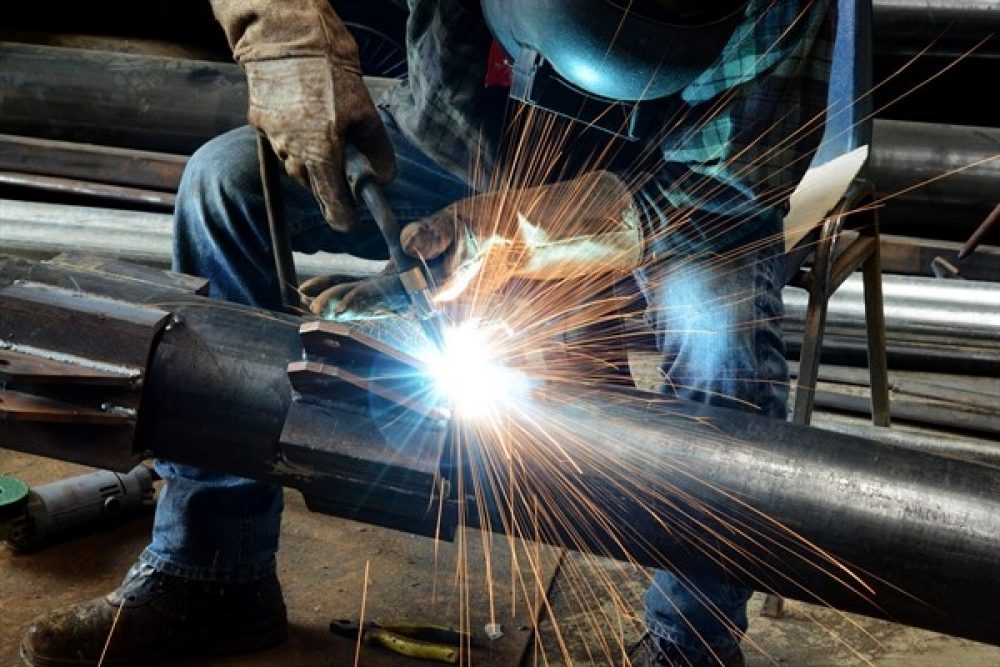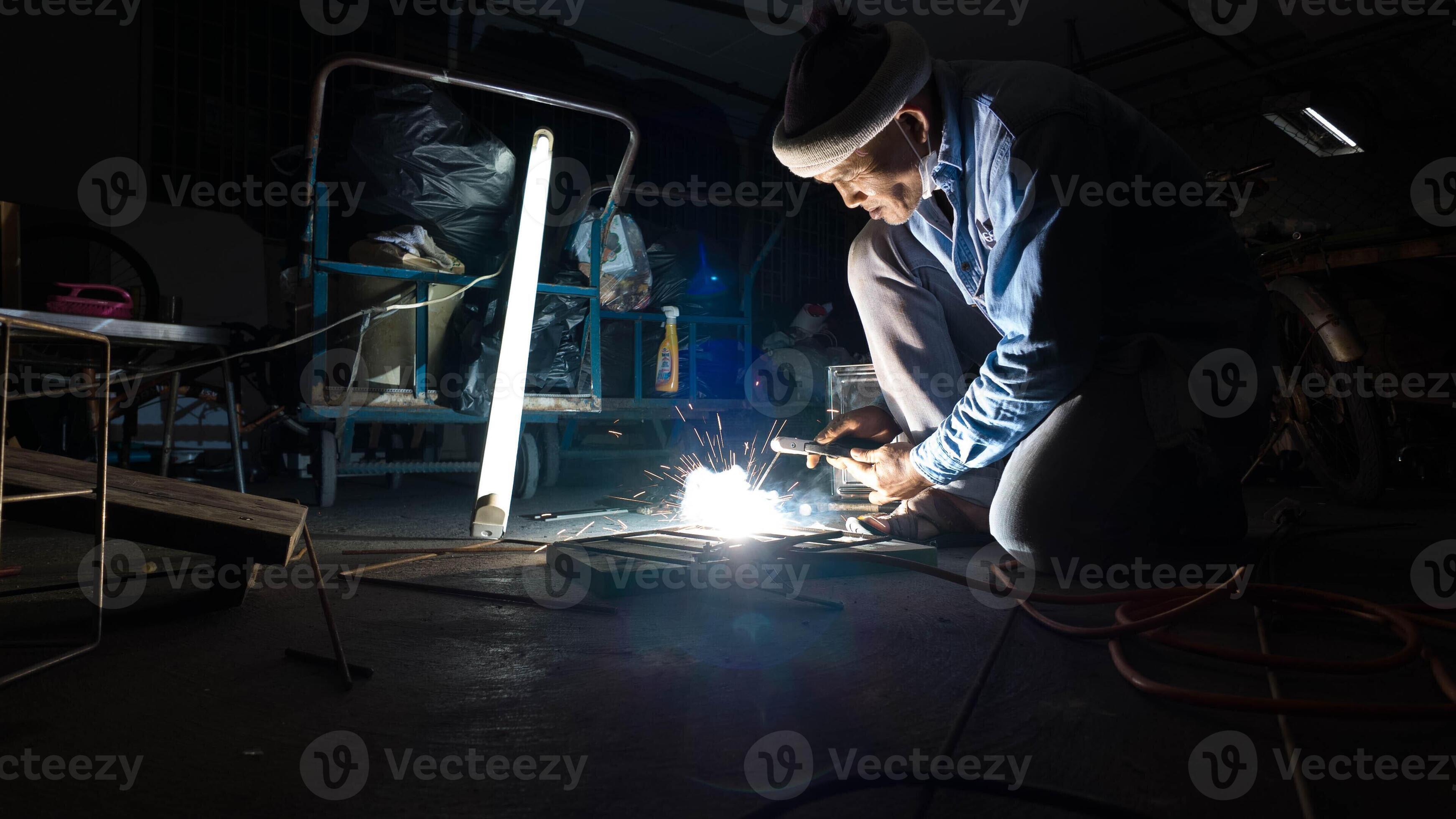Typical Welding Fixing Issues and Exactly How to Address Them Effectively
Welding repairs usually come across an array of issues that can threaten the integrity of the end product. Common troubles consist of inadequate infiltration, porosity, and imbalance, to name a few. Each problem presents distinct difficulties that need certain strategies for resolution. Recognizing these problems is necessary for welders aiming to enhance their end results and abilities. This discussion will certainly check out these common welding repair service issues and efficient methods to address them.
Inadequate Infiltration
Inadequate infiltration happens when the weld steel falls short to completely fuse with the base material, resulting in weak joints and possible structural failings. This problem commonly stems from inadequate heat input, incorrect electrode angle, or improper welding speed. Welders might run into insufficient penetration as a result of a mistake of the needed parameters for a details material density or type. Furthermore, contamination on the base product's surface can hinder reliable bonding, worsening the trouble. To address poor infiltration, welders should assure ideal settings on their tools and preserve a tidy job surface area. Routine assessment of welds is advised to recognize any deficiencies early, allowing for timely improvements and the avoidance of jeopardized structural integrity in bonded settings up.
Porosity
Porosity is a typical problem in welded joints that shows up as little gas bubbles caught within the weld metal. This problem can jeopardize the stability of the weld, causing reduced strength and potential failure under anxiety. Belgrade Welding. Porosity commonly develops from contamination, moisture, or incorrect welding strategies, which allow gases to leave into the molten weld pool. To resolve porosity, welders must assure proper surface prep work, preserve a clean workplace, and make use of suitable welding specifications. In addition, picking the best filler material and protecting gas can alleviate gas entrapment. Regular examination and screening of welds can help identify porosity early, assuring timely rehabilitative actions are taken, thus maintaining the top quality and integrity of the welded framework
Misalignment
Imbalance in welding can arise from various variables, consisting of improper setup and thermal expansion. Recognizing the source is essential for reliable resolution. Numerous improvement techniques are offered to straighten components and assure architectural honesty.
Reasons of Misalignment
Welding imbalance often originates from a range of underlying problems that can compromise structural honesty. One key cause is incorrect fit-up of elements prior to welding, which can lead to gaps and unequal surface areas. Variations in thermal growth during the welding procedure can likewise cause distortion, particularly if the products being joined have different coefficients of development. In addition, inadequate securing and fixturing might stop working to hold components safely in area, leading to activity during welding. Improperly maintained devices, consisting of welding machines and devices, may present incongruities in the weld grain, additional adding to misalignment. Driver error, stemming from insufficient training or experience, can additionally play a substantial function in creating misaligned welds.

Correction Strategies Readily Available
Dealing with imbalance effectively needs a combination of rehabilitative methods tailored to the details problems handy. One usual approach is the use of fixtures or jigs to hold components in the appropriate setting throughout welding, making certain constant positioning. Additionally, preheating the products can help in reducing distortion and improve fit-up. For substantial misalignment, mechanical realignment techniques, such as using hydraulic jacks or clamps, can be employed to deal with the placement before welding. Post-weld warmth treatment may additionally be necessary to ease tensions triggered by imbalance. Ultimately, mindful inspection and change throughout the configuration phase can stop misalignment issues from ending up being significant issues, promoting a smoother welding procedure and boosting overall structural honesty.
Distortion
Distortion is an usual challenge in welding that can develop from different elements, consisting of irregular heating & cooling. Comprehending the root causes of distortion is vital for implementing efficient prevention techniques. Resolving this problem not only improves structural integrity however likewise improves the total top quality of the weld.
Root causes of Distortion
When based on the intense warmth of welding, materials usually undergo changes that can lead to distortion. This sensation primarily develops from thermal development and tightening throughout the welding procedure. As the weld area warms up, the product expands; upon cooling, it gets, which can develop inner tensions. In addition, uneven home heating across a work surface can aggravate these anxieties, leading to bending or bending. The sort of material likewise plays a significant duty; metals with varying thermal conductivity and coefficients of development may react in a different way, resulting in unforeseeable distortions. Poor joint style and inadequate fixturing can contribute to imbalance throughout welding, boosting the possibility of distortion. Understanding these causes is essential for efficient welding fixing and prevention approaches.
Avoidance Techniques
Effective prevention strategies for distortion during welding concentrate on managing heat input and making certain correct joint style. Preserving a constant heat input assists to reduce thermal growth and contraction, which can lead to distortion. Utilizing techniques such as pre-heating the workpiece can likewise lower the temperature slope, promoting uniform home heating. In addition, choosing proper joint layouts, such as T-joints or lap joints, can boost security and reduce stress concentrations. Applying correct fixturing to protect the workpieces in location further help in preserving placement throughout the welding procedure. Ultimately, staggered welding sequences can disperse warm a lot more equally, avoiding local distortion. By applying this page these techniques, welders can significantly decrease the chance of distortion and improve the overall top quality of their welds.
Fracturing
Splitting is a typical concern come across in welding repair work, usually arising from various aspects such as inappropriate air conditioning rates, material choice, or inadequate joint preparation. The incident of cracks can substantially jeopardize the honesty of the weld, bring about possible failures throughout operation. To resolve this issue, welders have to initially analyze the origin causes, guaranteeing that products work and suitably picked for the certain application. Furthermore, regulating the cooling price during the welding procedure is crucial; rapid air conditioning can cause stress and lead to splitting. Proper joint layout and prep work also contribute to lessening the danger. Applying these approaches can enhance weld high quality and sturdiness, inevitably reducing the probability of cracking in completed weldments.

Incomplete Combination
A substantial concern in welding repairs is incomplete combination, which occurs when the weld metal does not effectively bond with the base material or previous weld passes - Belgrade Welding. This flaw can result in weaknesses in the joint, possibly jeopardizing the integrity of the welded structure. Elements adding to insufficient combination include not enough warmth input, inappropriate welding strategy, and contamination of the surface areas being joined. To resolve this problem efficiently, welders must ensure correct pre-weld cleansing and surface area preparation, in addition to change their welding parameters to achieve sufficient penetration and fusion. Normal evaluation during the welding procedure can also aid identify insufficient blend early, allowing for timely rehabilitative procedures to improve the overall quality of the weld
Overheating
While welding fixings can boost structural integrity, overheating offers a significant challenge that can cause material destruction. Too much warm during welding can change the mechanical homes of steels, causing reduced stamina, raised brittleness, and warping. This sensation is especially vital in high-stress applications where architectural integrity is vital. Recognizing overheating can entail visual evaluations for staining or distortion, in addition to checking temperature during the welding process. To mitigate the dangers related to overheating, welders should employ suitable techniques, such as managing heat input, changing travel speed, and utilizing ideal filler materials. Furthermore, carrying out pre- and post-weld heat treatments can aid recover product residential you could try these out properties and boost the overall quality of this the repair, making certain long-term efficiency and safety.
Often Asked Concerns
What Are the Common Indicators of a Welding Problem?
How Can I Check My Welds for Top quality?
To check welds for quality, one can use aesthetic evaluations, ultrasonic screening, and radiographic techniques. Each method guarantees architectural integrity, recognizes flaws, and confirms adherence to specified criteria, inevitably improving the dependability of the welded joints.
What Safety Safety Measures Should I Take While Welding?
When welding, one must focus on security by wearing ideal personal protective tools, making certain appropriate air flow, securing combustible materials away, keeping a tidy workspace, and recognizing surroundings to protect against injuries and mishaps.
Can I Fix a Weld Without Redesigning the Entire Joint?
Fixing a weld without redoing the entire joint is possible, depending upon the damage (Belgrade). Methods such as grinding, adding filler material, or utilizing a welding process can efficiently address details flaws while preserving the surrounding structure
What Tools Are Necessary for Effective Welding Repairs?
Essential tools for efficient welding repairs include a welding maker, cable brush, grinder, safety gear, clamps, and filler products. Each device plays a crucial duty in making sure top quality and safety and security during the repair procedure. Porosity typically develops from contamination, wetness, or improper welding strategies, which enable gases to run away right into the molten weld swimming pool. Inadequately conserved devices, consisting of welding makers and tools, may present disparities in the weld grain, more contributing to imbalance. When subjected to the intense warmth of welding, products often undertake modifications that can lead to distortion. Splitting is a typical issue run into in welding fixings, typically resulting from numerous variables such as improper cooling prices, material option, or insufficient joint prep work. A considerable concern in welding repair services is incomplete fusion, which happens when the weld steel does not properly bond with the base product or previous weld passes.